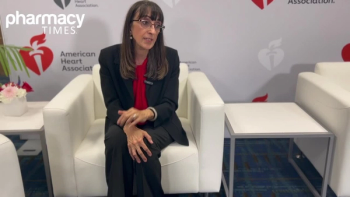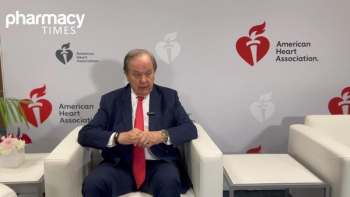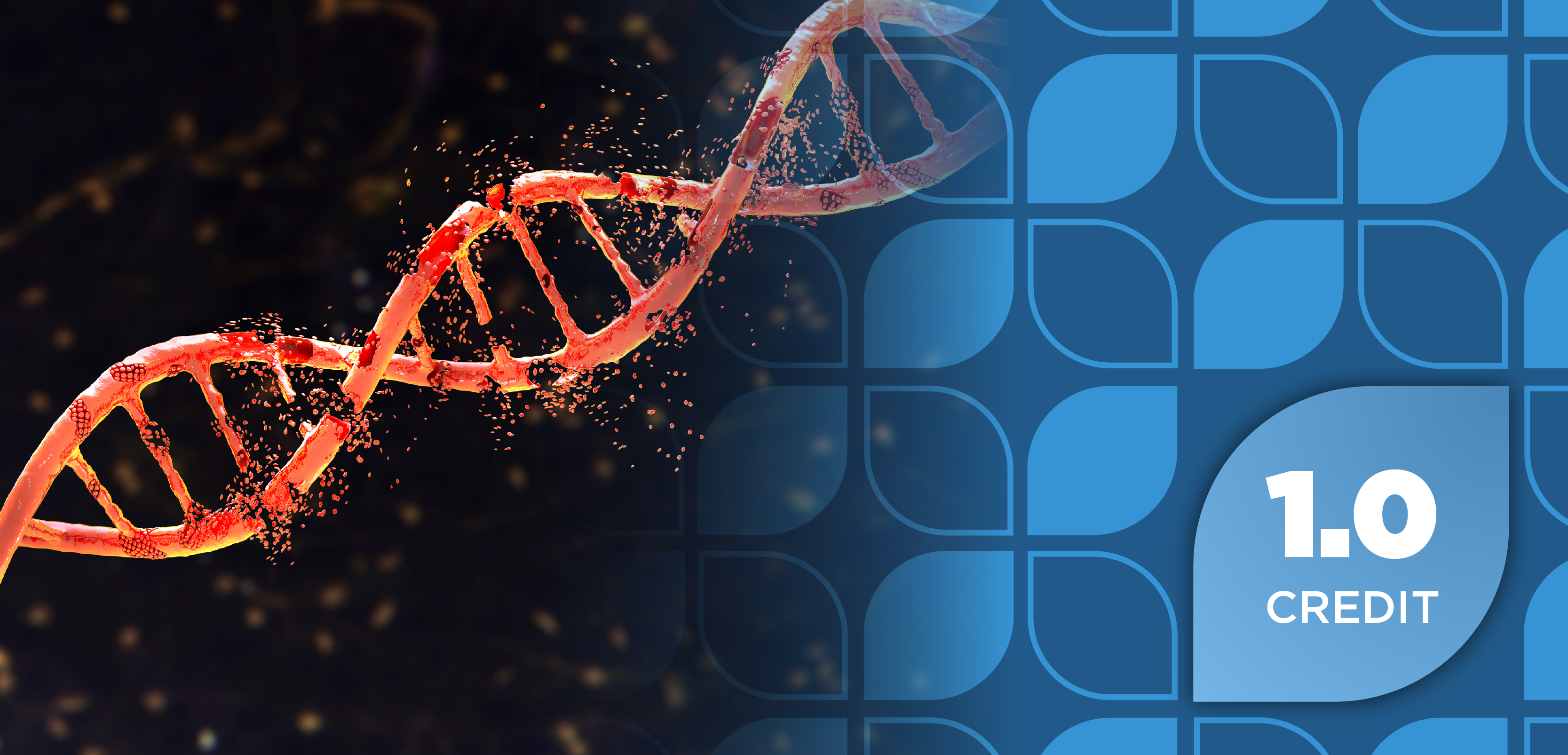On January 16, 2025, the FDA approved acalabrutinib (Calquence; AstraZeneca) in combination with bendamustine and rituximab for the treatment of adult patients with previously untreated mantle cell lymphoma (MCL) who are ineligible for autologous hematopoietic stem cell transplantation (HSCT). Acalabrutinib had previously received approval in 2017 as a single agent for this same indication. The recent application was granted both priority review and orphan drug designation.1
About the Authors
Amir Ali, PharmD, BCOP, is a clinical pharmacist specialist at the University of Southern California (USC) Norris Comprehensive Cancer Center and an adjunct assistant professor of pharmacy practice at USC Alfred E. Mann School of Pharmacy and Pharmaceutical Sciences in Los Angeles.
Mary Dzhuryan is a class of 2026 PharmD candidate at the USC Alfred E. Mann School of Pharmacy and Pharmaceutical Sciences.
Mehrnaz Razavi Vakhshoori is a class of 2026 PharmD candidate at the USC Alfred E. Mann School of Pharmacy and Pharmaceutical Sciences.
The FDA’s review of acalabrutinib was conducted under Project Orbis, an initiative of the FDA Oncology Center of Excellence that enables concurrent submission and review of oncology drugs across international regulatory agencies. For this application, the FDA collaborated with the Australian Therapeutic Goods Administration, Health Canada, and Switzerland’s Swissmedic.1
MCL: A Challenging and Heterogeneous Disease
MCL is a rare and aggressive subtype of non-Hodgkin lymphoma characterized by overexpression of cyclin D1 and a generally poor prognosis. Because of its aggressive nature, MCL is typically treated with combination chemotherapy at diagnosis. However, MCL remains incurable and demonstrates clinical and molecular heterogeneity, necessitating tailored treatment approaches.
The 2016 World Health Organization classification of MCL recognizes 2 molecular subtypes that reflect divergent pathogenesis and clinical behavior2:
- Classical MCL is derived from naive B cells that lack somatic hypermutation in IGHV, do not transit through the germinal center, and express the SOX11 transcription factor. This subtype typically involves lymph nodes and extranodal sites and is associated with additional genomic abnormalities involving cell cycle and DNA damage pathways.
- Leukemic nonnodal MCL, in contrast, originates from B cells that have undergone germinal center passage with somatic hypermutation in IGHV and that lack SOX11 expression. Patients often present with peripheral blood, bone marrow, and splenic involvement. This subtype is associated with a more indolent course and genomic stability over time.
There is currently no universal standard of care for MCL. For younger, fit patients, intensive chemoimmunotherapy regimens—including cytarabine and rituximab—with subsequent autologous HSCT and maintenance rituximab are frequently employed. However, these regimens are not feasible for the majority of patients, who are often older or have frailty and are at increased risk for treatment-related toxicity, including infections and secondary malignancies.2
Acalabrutinib: Targeted BTK Inhibition With Reduced Off-Target Effects
Acalabrutinib is a next-generation Bruton tyrosine kinase (BTK) inhibitor that disrupts B-cell receptor signaling pathways essential for B-cell proliferation, survival, and oncogenesis. By inhibiting BTK, acalabrutinib blocks downstream activation of NF-κB, PI3K, and MAPK pathways, promoting apoptosis and halting proliferation of malignant B cells. Compared with first-generation BTK inhibitors such as ibrutinib (Imbruvica; Pharmacyclics), acalabrutinib is more selective, resulting in fewer off-target effects and improved tolerability.3
In a phase 1b trial (NCT02717624) evaluating the safety and efficacy of acalabrutinib in combination with bendamustine and rituximab in patients with treatment-naive (TN) or relapsed/refractory (R/R) MCL, 38 patients (median age, 66 years) received six 28-day cycles of the triplet regimen.4 Maintenance therapy with acalabrutinib and rituximab continued for up to 2 years, followed by acalabrutinib monotherapy until disease progression or treatment-limiting toxicity. Baseline disease characteristics included stage IV disease in 89% (TN) and 95% (R/R) of patients, high-risk Mantle Cell Lymphoma International Prognostic Index scores in 11% and 15%, bulky disease over 5 cm in 17% and 30%, and blastoid morphology in 6% and 15%, respectively.5
Primary end points included safety, with secondary end points of overall response rate (ORR), progression-free survival (PFS), and duration of response. ORRs were 94.4% in the TN cohort (95% CI, 72.7%-99.9%) and 85.0% in the R/R cohort (95% CI, 62.1%-96.8%). Treatment-related adverse events (AEs) included nausea (77.8% of TN patients) and neutropenia (55.0% of R/R patients). Serious AEs occurred in 61.1% and 65.0% of TN and R/R patients, respectively. Grade 3 or higher hemorrhage occurred in 2 (TN) and 3 (R/R) patients, whereas hypertension occurred in 3 (TN) and 2 (R/R) patients. Deaths were reported in 5 TN and 6 R/R patients.5
Phase 3 ECHO Trial: A New Frontline Option
The approval was supported by data from the phase 3 ECHO trial (NCT02972840), presented at the 2024 European Hematology Association Hybrid Congress. The trial enrolled 598 patients 65 years or older with TN MCL. Patients were randomly assigned to receive acalabrutinib 100 mg or placebo twice daily alongside 6 cycles of bendamustine and rituximab, followed by maintenance rituximab for 2 years in responders. Patients in the placebo arm were permitted to cross over to acalabrutinib upon disease progression.
With a median follow-up of 45 months, the ORR was 91.0% in the acalabrutinib group vs 88.0% in the placebo group. Complete response rates were higher in the acalabrutinib arm (66.6% vs 53.5%). The primary end point of PFS showed significant improvement with acalabrutinib (HR, 0.64; 95% CI, 0.48-0.84; P = .0017), with median PFS of 66.4 months vs 49.6 months. Median overall survival had not been reached in either group.6
Grade 3 or higher treatment-emergent AEs (TEAEs) occurred in 88.9% of the acalabrutinib group and 88.2% of the placebo group. Serious TEAEs were reported in 69.0% and 62.0%, respectively, and treatment discontinuation due to TEAEs occurred in 42.8% and 31.0%, respectively.6
Notable AEs included infections (78.1% in the acalabrutinib group vs 71.0% in the placebo group), hypertension (12.1% vs 15.8%, respectively), atrial fibrillation (6.1% vs 4.4%, respectively), second primary malignancies (9.8% vs 10.8%, respectively), and major bleeding events (2.4% vs 5.4%, respectively).7
Clinical Considerations for Oncology Pharmacists
Pharmacists are integral to optimizing the use of acalabrutinib within interdisciplinary teams. Supportive care strategies for managing treatment-related AEs include corticosteroids (eg, prednisone 20-60 mg/day) for lymphadenopathy and inflammatory responses, loperamide for diarrhea, topical steroids or antihistamines for rash, and antihypertensive agents for blood pressure control. Acetaminophen may help alleviate arthralgia, myalgia, and headaches.
Pharmacists should remain vigilant for acalabrutinib-associated cytopenias, arrhythmias (eg, atrial fibrillation/flutter), and bleeding, particularly in patients on concomitant antithrombotics. Although no formal contraindications are listed in AstraZeneca’s US labeling, perioperative management may require holding acalabrutinib 3 to 7 days before and after surgery to minimize bleeding risk. Hepatotoxicity and drug-induced liver injury are additional risks that require monitoring.
Pharmacists are well positioned to perform drug interaction checks, counsel patients on adherence and administration, and coordinate supportive care, including prophylaxis for infections (eg, granulocyte colony-stimulating factor, vaccines). Additionally, they often facilitate financial navigation, prior authorizations, and medication access to support patient-centered care.
Conclusions
The FDA’s approval of acalabrutinib in combination with bendamustine and rituximab offers a new frontline option for patients with untreated MCL who are ineligible for intensive therapy. With demonstrated efficacy in prolonging PFS and a manageable safety profile, this regimen represents a meaningful advance in the therapeutic landscape. Oncology pharmacists will play a critical role in ensuring safe, effective, and equitable access to this promising new standard of care.
REFERENCES
Martin P, Ghione P, Dreyling M. Mantle cell lymphoma — current standards of care and future directions. Cancer Treat Rev. 2017;58:51-60. doi:10.1016/j.ctrv.2017.05.008
Schmidt A. Effect of acalabrutinib in combination with bendamustine plus rituximab on survival endpoints in older patients with mantle cell lymphoma: insights from the ECHO trial. healthbook TIMES Onco Hema. 2024;22(4):22-29. doi:10.36000/HBT.OH.2024.22.163
A study of acalabrutinib in combination with rituximab + (bendamustine or venetoclax) in subjects with MCL. ClinicalTrials.gov. Updated February 19, 2025. Accessed May 14, 2025. https://clinicaltrials.gov/study/NCT02717624
Phillips T, Wang M, Robak T, et al. Safety and efficacy of acalabrutinib, bendamustine, and rituximab in patients with treatment-naive or relapsed/refractory mantle cell lymphoma: phase IB trial. Hemasphere. 2023;7(suppl 3):e64204bc. doi:10.1097/01.HS9.0000971272.64204.bc























































































































































































































